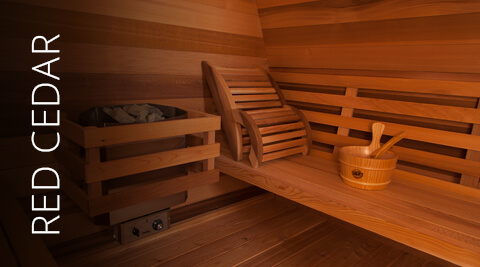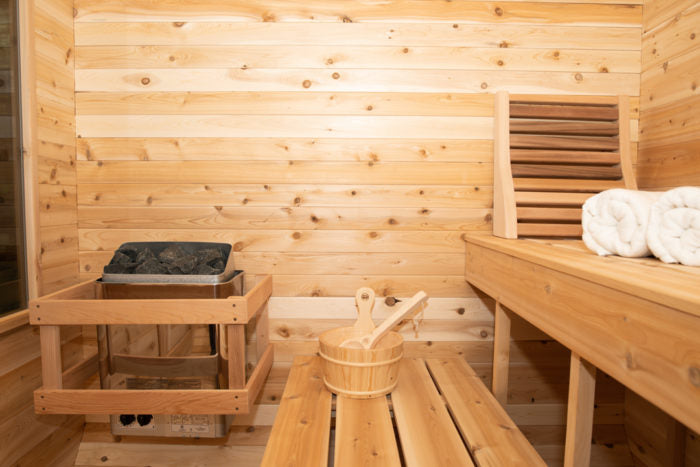Traditional Sauna - The Facts
Traditional Sauna - The Facts
Blog Article
Some Ideas on Traditional Sauna You Need To Know
Table of ContentsLittle Known Questions About Traditional Sauna.Not known Details About Traditional Sauna The 20-Second Trick For Traditional SaunaThe 3-Minute Rule for Traditional SaunaTraditional Sauna - The Facts
A lot of the weight lost in a sauna is water loss and is re-gained upon rehydrating. Nevertheless, undeniably sauna can be a vital part of a healthy and balanced weight management program. To look at the differences between traditional and IR saunas, I will separate these into proven, academic, and made distinctions.Hence, the best factor in the saunawhich is at the ceiling directly above the sauna heateris generally between 185 and 190 F. Claims that a standard sauna surpasses 200 F is just not true and not applicable for electric saunas marketed in the United States. The temperature for a far-infrared sauna is typically set in between 120 and 140 F; nonetheless, unlike the typical sauna, the objective in and IR space is not to achieve a high temperature.

When a standard sauna has been appropriately heated, the sauna wall surfaces are warm, the air temperature level has actually achieved established temperature and the rocks are super warmed. As an interesting side note, the warmed wall surfaces and the rocks are emitting far-infrared warm, combined with the heated air, to develop an "enveloping warm".
4 Simple Techniques For Traditional Sauna
When the heat is accomplished, the components cycle on and off to keep the heat. A lot of typical sauna users delight in pouring water over the rocks to develop vapor to elevate sauna humidity levels. The benefits of pouring water over the rocks include: making the space a lot more comfy, dampening the nasal flows, and permitting the usage of aromatherapy by mixing vital oils with the water.

When the energy enters the body, it causes the body temperature level to raise and inevitably causes sweating. In an infrared sauna it is essential for the emitters/heaters to stay on practically constantly. Since there is no mass of rocks to retain warmth, the sauna will certainly cool if the emitters turned off.
Some Known Factual Statements About Traditional Sauna
As mentioned over, the sauna bather in an infrared room intends to position himself before operating emitters to get maximum take advantage of the warmth. The home heating time for the 2 rooms can be extremely different, relying on how the areas are used. For a traditional sauna, a bather must allow 30-40 minutes for the area to achieve a desired temperature level and to correctly pre-heat the rocks.

A well built sauna will normally accomplish a temperature level of 150-160 F in concerning 30-40 mins. For hotter temperature levels, the area might require to warmth for a longer duration.
To some, 15 mins was "wasted" while the infrared energy heated the wood panels rather than heating a body, while others find his comment is here a pre-heated room to be much more comfortable and believe an elevated starting temperature level is essential to start sweating. The size of advised usage for each room is approximately the same (10-15 minutes per session); however, due to the reduced air temperature levels and the capacity to really feel the impacts of infrared heat faster than a conventional sauna, it is not uncommon for an individual to invest an overall of 20-30 minutes in an infrared sauna.
The Facts About Traditional Sauna Uncovered

The average expense per kWH of electricity in the U.S. is about $0.11, so a 4.5 kW heater will set you back about $.50 try here to run for one hour, if the heating unit runs constantly for one hour. Generally a sauna heating unit will certainly compete 75% of the first hour and 50% of subsequent hours on considering that the components cycle once the established temperature is achieved.
A two person far-infrared space weblink is generally literally smaller than a conventional sauna, commonly concerning 4' x 4' or smaller sized. The IR heater is generally 1.5-1.7 kW utilizing a 120 volt 15 amp plug-in service. Considering that the area can be made use of earlier than a sauna room, we will assume the room is used for to of an hour consisting of warm up time.
There is a rarely gone over difference in the social experience between the two rooms. While our culture has shed several of the social advantage of the typical sauna experience, it can be really socially fulfilling (Traditional Sauna). From family members time in the sauna, to heart-felt discussions with better halves, to sauna partiesthe standard sauna experience can result in intimate interacting socially
The Ultimate Guide To Traditional Sauna
Most higher end infrared areas include tinted light therapy, noise systems and full-glass fronts.
Report this page